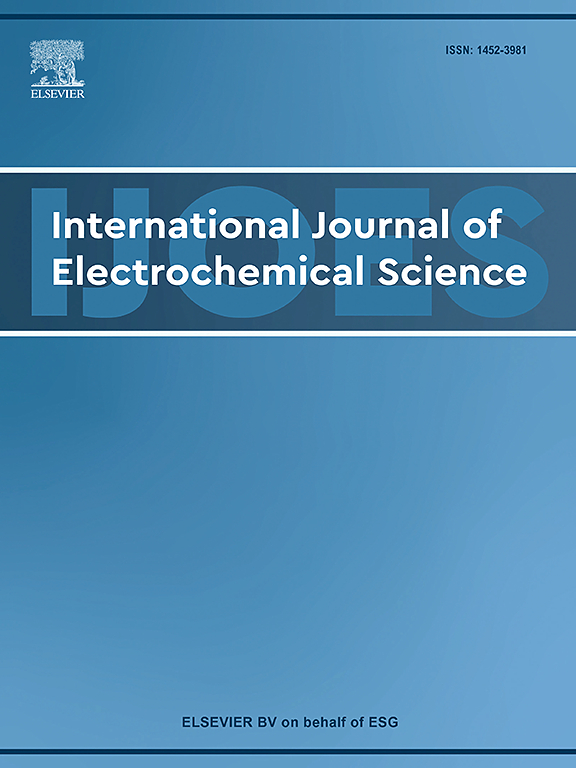电化学抛光对激光切割镍钛合金心血管支架表面性能的影响
IF 2.4
4区 化学
Q4 ELECTROCHEMISTRY
International Journal of Electrochemical Science
Pub Date : 2025-06-15
DOI:10.1016/j.ijoes.2025.101101
引用次数: 0
摘要
镍钛合金以其形状记忆效应、超弹性和良好的生物相容性而闻名,是一种很有前途的生物医学材料。其良好的表面特性导致其使用需求显著增长,包括小结构和复杂几何形状的应用,如心血管支架。与喷砂、研磨和其他复杂应用的表面处理方法相比,电化学抛光具有非接触加工和均匀处理的优点;因此,它已成为心血管支架表面处理的关键技术。为了进一步阐明电化学抛光对心血管支架使用性能的整体影响,本研究考察了电化学抛光参数,如电流密度、电极间距、抛光温度和抛光时间对ni -钛合金心血管支架表面性能的影响。通过在定制的心血管支架抛光平台上进行正交试验和单因素试验,以确定最佳工艺参数。结果表明,电化学抛光有效降低了支架表面粗糙度,消除了激光切割后残留的热损伤等缺陷,提高了支架表面质量。此外,抛光后表面形成的氧化膜增强了耐腐蚀性,防止了Ni离子的析出。本研究结果为提高镍钛合金心血管支架的使用性能和生物相容性提供了有价值的参考。本文章由计算机程序翻译,如有差异,请以英文原文为准。
Effects of electrochemical polishing on the surface properties of laser-cut Ni–Ti alloy cardiovascular stents
The Ni–Ti alloy, known for its shape memory effect, superelasticity, and remarkable biocompatibility, has emerged as a promising biomedical material. Its favourable surface properties have resulted in the requirements for its usage growing significantly, including in applications with small structures and complex geometries such as cardiovascular stents. Compared to sandblasting, grinding, and other surface treatment methods for such complex applications, electrochemical polishing offers the advantages of non-contact processing and uniform treatment; consequently, it has become a key surface treatment technique for cardiovascular stents. To further clarify the overall influence of electrochemical polishing on the service performance of cardiovascular stents, this study investigates the effects of electrochemical polishing parameters, such as the current density, electrode spacing, polishing temperature, and polishing time, on the surface performance of Ni–Ti alloy cardiovascular stents. This was achieved through orthogonal and one-factor experiments conducted on a custom-built cardiovascular stent polishing platform, with the goal of identifying the optimal process parameters. The results reveal that electrochemical polishing effectively reduces the surface roughness of the stent, eliminates defects such as thermal damage remaining after laser cutting, and improves the surface quality. Additionally, the oxide film formed on the surface after polishing enhances the corrosion resistance and prevents Ni ion precipitation. Overall, these findings provide a valuable reference for improving the serviceability and biocompatibility of Ni–Ti alloy cardiovascular stents.
求助全文
通过发布文献求助,成功后即可免费获取论文全文。
去求助
来源期刊
CiteScore
3.00
自引率
20.00%
发文量
714
审稿时长
2.6 months
期刊介绍:
International Journal of Electrochemical Science is a peer-reviewed, open access journal that publishes original research articles, short communications as well as review articles in all areas of electrochemistry: Scope - Theoretical and Computational Electrochemistry - Processes on Electrodes - Electroanalytical Chemistry and Sensor Science - Corrosion - Electrochemical Energy Conversion and Storage - Electrochemical Engineering - Coatings - Electrochemical Synthesis - Bioelectrochemistry - Molecular Electrochemistry

 求助内容:
求助内容: 应助结果提醒方式:
应助结果提醒方式:


